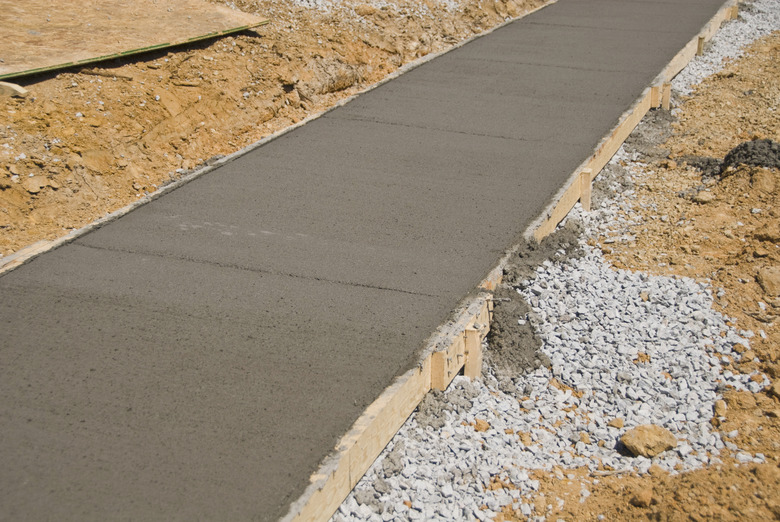How To Repair A Settling Sidewalk
A settling or sinking sidewalk is not only unattractive, but it can also be dangerous. Guests approaching your home can trip on the sidewalk if it is uneven and sinking. The old-fashioned way to fix a settling sidewalk was to tear up the entire slab and have it repoured.
A settling or sinking sidewalk is not only unattractive, but it can also be dangerous. Guests approaching your home can trip on the sidewalk if it is uneven and sinking. The old-fashioned way to fix a settling sidewalk was to tear up the entire slab and have it repoured. Newer technology allows you to repair sidewalks using mudjacking–a method used by highway construction and other contractors to level uneven, cracked or sunken concrete.
Step 1
Put on your safety goggles before you get started to protect your eyes from flying dirt and debris.
Step 2
Drill a hole all the way through the sunken part of the concrete with your masonry drill.
Step 3
Connect the grout pump to the hole and pump the grout mixture (pond sand and concrete) into the sidewalk until it is level.
- A settling or sinking sidewalk is not only unattractive, but it can also be dangerous.
- Newer technology allows you to repair sidewalks using mudjacking–a method used by highway construction and other contractors to level uneven, cracked or sunken concrete.
Step 4
Retract the hose and fill in the hole with any type of concrete mixed according to the manufacturer's directions or asphalt. Make sure to smooth the surface of the hole with a putty knife.
Repair A Cement Sidewalk
Scrub the cracks in the sidewalk with dish soap and water to remove any grease, salt and dirt. This will help the concrete patch to hold longer. Hairline cracks don't need to be chiseled. Mix the cement patch as directed. Apply the patch to the cracks with a trowel, pressing it in so it fills up the hole and smoothing the top. Allow the patch to dry until it just starts to set.
- Retract the hose and fill in the hole with any type of concrete mixed according to the manufacturer's directions or asphalt.
- Apply the patch to the cracks with a trowel, pressing it in so it fills up the hole and smoothing the top.
Things Needed
- Grout pump
- Concrete or asphalt
- Masonry drill
- Safety goggles
- Grout mixture (pond sand and concrete)
- Putty knife
Warning
Mudjacking is not a do-it-yourself project and should only be done by a professional.
Tip
Instead of a grout mixture, mudjackers also use topsoil, clay, lime, grout and cement mortar to pump into a settling sidewalk.
